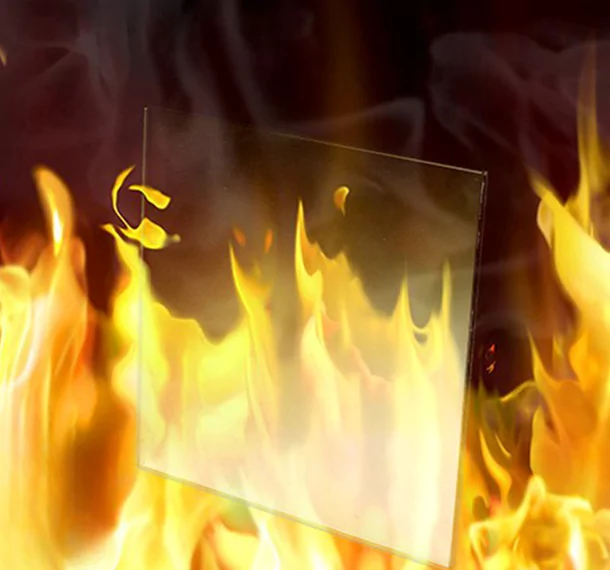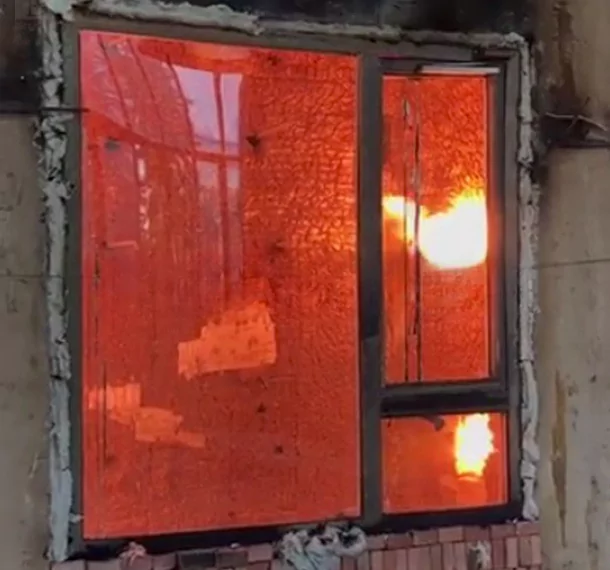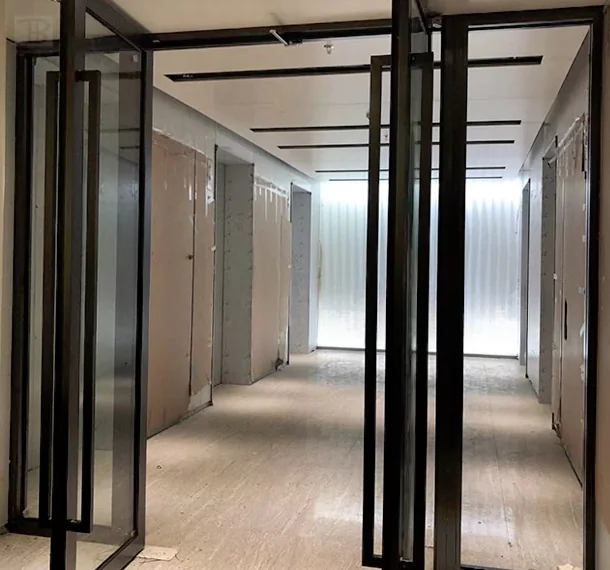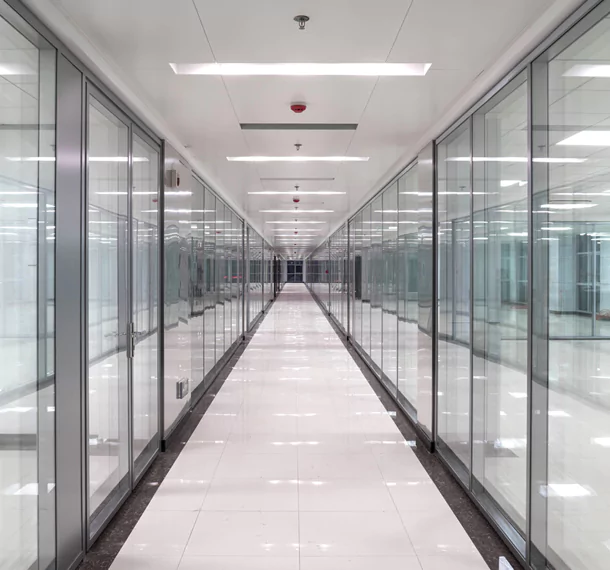
SINGLE LAYER FIRE-RATED GLASS
Learn more
DOUBLE LAYERS FIRE-RATED GLASS
Learn more
FIREPROOF GLAZING WINDOWS AND DOORS
Learn more




To fire safety in construction and design, the classifications of fire-rated materials is crucial. among these materials, fire-rated glass Myanmar plays a significant role in ensuring both aesthetic appeal and safety within buildings. the ratings assigned to fire-resistant glass—e, ew, and ei—serve as benchmarks for their performance during a fire event in Myanmar.
E rating: the e rating indicates that the glass provides integrity against flames and hot gases but does not offer insulation. this means that while the glass can prevent flames from passing through for a designated period, it does not protect against heat transfer. this rating is essential for areas where visibility is required without compromising safety; however, its limitations must be understood when considering its application.
Ew rating: the ew rating signifies that the glass not only maintains integrity against flames but also offers limited insulation. it provides protection from heat transmission up to a certain degree while allowing some light to pass through. this makes ew-rated glass particularly useful in spaces where both visibility and thermal protection are necessary, such as corridors or stairwells adjacent to areas of high risk.
Ei rating: the EI rating represents enhanced performance by providing both integrity and insulation for an extended period during a fire event. it effectively prevents flames from spreading while also minimizing heat transfer significantly more than e or ew rated products. this makes ei-rated glass ideal for critical applications where maintaining safe temperatures on the non-fire side of the barrier is paramount in Myanmar.
These ratings allows architects and builders to make informed decisions about which type of fire-rated glass Myanmar will best suit their projects' needs while complying with local building codes.
The integration of fire-rated glass Myanmar into architectural design offers numerous advantages beyond mere compliance with safety regulations. as urban environments evolve and buildings become more complex, incorporating this specialized material can enhance functionality without sacrificing aesthetics.
1. safety compliance: one of the primary benefits of using fire-rated glass is adherence to stringent building codes designed to protect occupants during emergencies. by choosing appropriate ratings (e, ew, or EI), designers ensure that they meet legal requirements while safeguarding lives.
2. aesthetic appeal: fire-rated glass can seamlessly blend into modern designs without compromising beauty or style. available in various finishes—clear, tinted, or frosted—it allows architects to create stunning visual elements like partition walls or expansive windows that still provide essential safety features.
3. natural light access: unlike traditional solid barriers that obstruct light flow within spaces, fire-rated glass enables natural illumination while maintaining safety standards. this feature enhances occupant comfort by reducing reliance on artificial lighting during daytime hours—a significant consideration in sustainable building practices.
4. versatility across applications: from commercial offices requiring open layouts to residential homes needing secure yet inviting spaces between rooms; there’s an increasing demand across diverse sectors for innovative solutions involving this material type—from storefronts showcasing products behind protective barriers at retail locations through educational institutions prioritizing student welfare amid growing concerns over security risks.
5. enhanced property value: incorporating advanced materials like fire-resistant glazing can increase property value by demonstrating forward-thinking design choices focused on occupant well-being alongside compliance with evolving industry standards—an attractive proposition for prospective buyers who prioritize modern amenities coupled with robust safety measures!
Understanding e, ew, and EI ratings equips professionals involved in construction projects with knowledge vital for making informed decisions about implementing effective solutions tailored toward optimal performance under emergency conditions—all while embracing contemporary architectural trends!
Fire-rated glass plays a critical role in protecting structures from fire by withstanding extreme temperatures for an extended period. This type of material provides invaluable security.
Choose the ideal fire-rated glass Myanmar depends on various factors, including its intended use, building codes and desired rating. sticla This type of material can often be seen being utilized as an effective barrier against fire in walls, doors, windows and curtain walls.
Knowledge of different types of fireproof glass products and their ratings as well as installation requirements is vital in order to guarantee proper fire safety.
This comprehensive guide will introduce you to the world of fire-rated glass Myanmar , providing a deeper insight into its properties, benefits, and applications.
Understanding Fire Protection Glass in Construction
Fireproof glass plays a pivotal role in modern construction, providing vital protection from flames and heat spread. It is specifically designed to withstand high temperatures for prolonged periods, thus limiting fire expansion.
There are various kinds of fireproof glass available today, each offering different characteristics and purposes. Some examples are:
* Glass that has been treated for extra strength.
* Glass with an additional layer of fire-retardant material such as ceramic or plastic to provide additional fire protection
* Specialized glass blends that can withstand extreme temperatures without breaking are available and should be considered when designing any heat resistant applications.
Selecting an ideal fire protection glass type depends on several considerations, such as its purpose in your building's application, local fire codes, and your design needs.
Shielding Structures from Flames
Fire resistant glass is an integral component in protecting buildings against flames. Engineered specifically to withstand intense temperatures generated by fire, this special form of glass acts as an invincible shield against its destructive power.
Fire resistant glass features unique properties that enable it to withstand exposure to extreme temperatures without cracking under pressure, helping occupants escape without immediate danger and providing them with more time to evacuate safely.
As fire safety is of utmost importance, these products are often employed for applications including:
* Fireproof walls / Windows in stairwells/ Building facades / Emergency exits
Safety Through Fire-Rated Glazing
Safety has long been at the core of construction and building regulations, and demand for fireproof glazing systems has only grown with increased awareness about fire hazards. These specialized windows can withstand high temperatures while helping stop flame spread - providing vital protection in case of fire emergencies.
These glazing systems use advanced materials such as tempered glass, ceramic coatings and fire-resistant interlayers to form an effective shield against heat and flames, giving occupants enough time to evacuate safely by slowing the rate of heat transference.
Implementing fireproof glazing systems into commercial buildings, residential homes and even public spaces can significantly increase safety while offering peace of mind.
Fire can be a frightening threat, threatening lives and property alike. Thanks to advances in fire-resistant technology, there are now anti-fire glass solutions available as a critical layer of defense against its destructive power. Engineered to withstand extreme temperatures without melting under their weight, anti-fire glass serves as an indispensable means of stopping rapid flame spread while giving crucial time for evacuation. Featuring special layers that contain heat efficiently while simultaneously decreasing risks related to ignition or spread through windows, installing anti-fire glass into buildings offers increased fire safety protecting lives and assets alike.
Firproof Glass Fire-proof or "fire glass," as it is also commonly known, plays an essential part in protecting structures against fire damage. Engineered specifically to withstand high temperatures for an extended duration and protect against flames or heat spreading quickly throughout a structure, fire glass is designed to withstand intense temperatures while offering effective protection.
Fireproof glass depends upon its composition. Fire-resistant glasses typically include special additives that improve its thermal performance, such as materials such as alumina which form strong bonds within its structure and make fire-resistant glass an essential defense against fire hazards.
Fire-resistant glass undergoes a process when exposed to high temperatures that helps it preserve its integrity. Additives interact with heat to produce a layer of noncombustible material on its surface that acts as an insulator against shattering and helps control fire spread.
Design of fireproof glass often incorporates multiple layers separated by special interlayers made of fireproof materials, further increasing its ability to withstand extreme temperatures.
Fire Protection Glass
Installing fire protection glass can significantly increase the safety and security of any building. This specialty type of glass was specifically created to withstand heat and flames in case of fire outbreak, providing essential defense. Furthermore, fireproof glasses offer unobstructed views while meeting safety standards - so by including it into your design plans for future buildings you can bolster their overall fireproof capabilities.
Fire protection glass contributes to meeting building codes and regulations, protecting valuable assets while protecting occupants from fire hazards. By employing fireproofing measures in your building, fireproof glass helps ensure compliance. Ultimately, using it helps ensure compliance and can contribute to the compliance with building codes and regulations.
Fire-Rated Glass and Its Applications
Fireproof glass plays an integral part in safeguarding buildings and lives during emergencies, providing a crucial barrier against fire spread and smoke containment for safe evacuation and containment. Available in various forms to fit specific uses, fire-rated glass offers enhanced protection depending on its rating; common categories include monolithic, wired and tempered glasses - each having different properties and performance capabilities.
Monolithic glass consists of one layer of heat-resistant material that has been annealed or tempered to increase strength, often used as a nonload-bearing wall or partition material. It provides basic fireproofing properties and is commonly found in nonload bearing walls and partitions. Wired glass features embedded mesh that enhances impact resistance and heat penetration protection - popular applications are windows and doors where extra security may be desired. Tempered glass undergoes thermal treatment processes to increase its strength and shatter resistance; ideal for larger openings requiring greater fire protection measures.
Fire-rated glass applications span from residential buildings to commercial complexes and industrial facilities, providing control during emergencies by way of doors with fireproof glass panels. Windows featuring fire-rated glass enhance visibility while mitigating heat and flames for safe evacuation; furthermore, fireproof partitions create safe zones within buildings by isolating potentially affected areas.
Implementation of Fire Resistant Glass Integrating fire-rated glass into construction projects requires compliance with industry standards established by organizations like the International Code Council and American Society for Testing and Materials (ASTM). These guidelines ensure that fireproof glass effectively survives high temperatures while mitigating fire transmission; compliance is essential to safeguard life safety and property protection in buildings.
Glass Performance Ratings These classifications of performance for glass panels vary depending on their ability to withstand exposure to fire heat for extended periods. Common classifications include 30 minutes, 60 minutes and 90 minutes.
Fitting guidelines require accurate installation techniques in order to preserve the fire resistance of glass surfaces, including sealants and margins.
Quality Assurance Glass used for fire resistance must undergo stringent testing by independent laboratories to ensure it satisfies specified fireproofing standards.
Thermal Barrier Testing of Glass Products
Glass products have become an indispensable element in modern construction and design, from windows to facades. Their visual appeal and practical advantages make them essential. Thermal barrier testing provides valuable insight into their capabilities as an architectural element and material component. Glass' inherent fragility necessitates extensive testing in order to assess its suitability for specific applications. One key characteristic is fire resistance, which measures how well materials can withstand high temperatures without becoming compromised and spreading flames. Fire-resistance testing for glass products involves subjecting samples to controlled fire conditions and evaluating them against predetermined criteria, such as temperature rise, heat transmission rate and visible flame penetration. These tests provide crucial data that enables architects, engineers, building codes and others to select suitable applications of glass in various fire safety situations.
Fire-resistance testing plays a pivotal role in protecting human lives and property by assuring that glass products adhere to stringent performance standards when exposed to flames.
Selecting the Appropriate Fire Protection Glass Solution
Fireproof glass plays a vital role in emergency preparedness. To make sure you find the ideal fireproof glass solution for you, it is crucial to take several factors into consideration when making your selection. Firstly, determine your building codes and safety regulations regarding required levels of fire resistance before selecting your final solution.
Fire protection glass comes in various classifications, each offering specific fire-retardant properties that should help guide your decision making process. An important consideration in making a decision about fireproof glass should also be its ability to transmit light - selecting fireproofing glasses which maximize natural illumination can add depth, style, and energy to a space.
Alongside these key considerations, it's also advisable to engage fire protection professionals. Their experience and guidance can prove invaluable in helping navigate through the selection process and ensure your chosen solution fulfills all necessary safety standards.
When it comes to fire-rated glass Myanmar , showcasing successful projects can provide valuable insights into its applications and effectiveness. Let's delve into three notable projects where fire-rated glass Myanmar was utilized as glass doors or glass walls, highlighting their project names, effects, and more:
1. Project Name: Skyline Office Tower_
- Usage: Fire-rated glass doors were incorporated in key areas of the building for enhanced safety measures in Myanmar.
- Effects: The use of fire-rated glass not only met safety regulations but also added a touch of modernity to the overall design aesthetic.
2. Project Name: Greenfield Hospital Expansion_
- Usage: Fire-rated glass walls were installed to partition different sections within the hospital.
- Effects: Apart from ensuring compartmentalization in case of a fire emergency, the transparent nature of the glass promoted a sense of openness and visibility throughout the space.
3. Project Name: Innovate Co-Working Space_
- Usage: Fire-rated glass partitions were creatively used to divide work zones while maintaining an open-plan layout.
- Effects: The incorporation of fire-rated glass not only met safety requirements but also allowed natural light to flow freely, creating a bright and inviting workspace environment.
These projects showcase how fire-rated glass can be seamlessly integrated into architectural designs to enhance both safety and aesthetics simultaneously.
Fill the form below to get in touch with us.
Our Location in Myanmar:Near Bagan Viewing Tower, Min Nanthu Village,Myanmar,Myanmar
VIDRIO RESISTENTE AL FUEGO Sayaxché
FIRE-RATED GLASS Ukraine
防火ガラス 薩摩川仙台
FIRE-RATED GLASS Sultan Kudarat
FIRE-RATED GLASS Cork
VIDRIO RESISTENTE AL FUEGO Tocuyito
زجاج مقاوم للحريق إد داين
防火ガラス 森山
زجاج مقاوم للحريق مادبا
FIRE-RATED GLASS Batangas